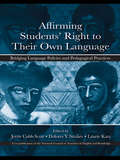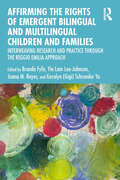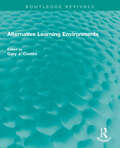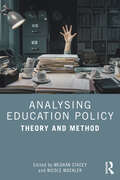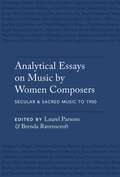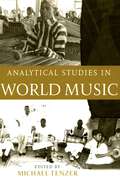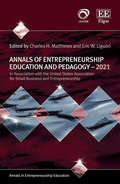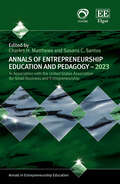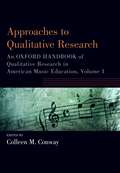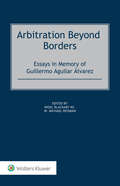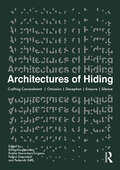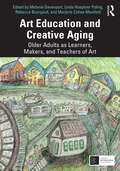- Table View
- List View
Advancing Natural Language Processing in Educational Assessment
Advancing Natural Language Processing in Educational Assessment examines the use of natural language technology in educational testing, measurement, and assessment. Recent developments in natural language processing (NLP) have enabled large-scale educational applications, though scholars and professionals may lack a shared understanding of the strengths and limitations of NLP in assessment as well as the challenges that testing organizations face in implementation. This first-of-its-kind book provides evidence-based practices for the use of NLP-based approaches to automated text and speech scoring, language proficiency assessment, technology-assisted item generation, gamification, learner feedback, and beyond. Spanning historical context, validity and fairness issues, emerging technologies, and implications for feedback and personalization, these chapters represent the most robust treatment yet about NLP for education measurement researchers, psychometricians, testing professionals, and policymakers.
Advancing the Culture of Teaching on Campus: How a Teaching Center Can Make a Difference
Written by the director and staff of the first, and one of the largest, teaching centers in American higher education – the University of Michigan’s Center for Research on Learning and Teaching (CRLT) – this book offers a unique perspective on the strategies for making a teaching center integral to an institution’s educational mission. It presents a comprehensive vision for running a wide range of related programs, and provides faculty developers elsewhere with ideas and material to prompt reflection on the management and practices of their centers – whatever their size – and on how best to create a culture of teaching on their campuses. Given that only about a fifth of all U.S. postsecondary institutions have a teaching center, this book also offers a wealth of ideas and models for those administrators who are considering the development of new centers on their campuses.Topics covered include:• The role of the director, budgetary strategies, and operational principles• Strategies for using evaluation to enhance and grow a teaching center• Relationships with center constituencies: faculty, provost, deans, and department chairs• Engagement with curricular reform and assessment• Strengthening diversity through faculty development• Engaging faculty in effective use of instructional technology• Using student feedback for instructional improvement• Using action research to improve teaching and learning• Incorporating role play and theatre in faculty development• Developing graduate students as consultants• Preparing future faculty for teaching• The challenges of faculty development at a research universityIn the concluding chapter, to provide additional context about the issues that teaching centers face today, twenty experienced center directors who operate in similar environments share their main challenges, and the strategies they have developed to overcome them through innovative programming and careful management of their resources. Their contributions fall into four broad categories: institutional-level challenges, engaging faculty and students and supporting engaged pedagogy, discipline-specific programming, and programming to address specific instructor career stages.
Advising Lesbian, Gay, Bisexual, Transgender, and Queer College Students
Co-published with NACADA.Changes on college and university campuses have echoed changes in U.S. popular culture, politics, and religion since the 1970s through unprecedented visibility of LGBTQA persons and issues. In the face of hostile campus cultures, LGBTQA students rely on knowledgeable academic advisors for support, nurturance, and the resources needed to support their persistence. This edited collection offers theoretical understanding of the literature of the field, practical strategies that can be implemented at different institutions, and best practices that helps students, staff, and faculty members understand more deeply the challenges and rewards of working constructively with LGBTQA students. In addition, allies in the field of academic advising (both straight/cis-identified and queer) reflect on becoming an ally, describe obstacles and challenges they have experienced and offer advice to those seeking to deepen their commitment to ally-hood.
Affirming Students' Right to their Own Language: Bridging Language Policies and Pedagogical Practices
A Co-publication of the National Council of Teachers of English and Routledge. How can teachers make sound pedagogical decisions and advocate for educational policies that best serve the needs of students in today’s diverse classrooms? What is the pedagogical value of providing culturally and linguistically diverse students greater access to their own language and cultural orientations? This landmark volume responds to the call to attend to the unfinished pedagogical business of the NCTE Conference on College Composition and Communication 1974 Students’ Right to Their Own Language resolution. Chronicling the interplay between legislated/litigated education policies and language and literacy teaching in diverse classrooms, it presents exemplary research-based practices that maximize students' learning by utilizing their home-based cultural, language, and literacy practices to help them meet school expectations. Pre-service teachers, practicing teachers, and teacher educators need both resources and knowledge, including global perspectives, about language variation in PreK-12 classrooms and hands-on strategies that enable teachers to promote students’ use of their own language in the classroom while also addressing mandated content and performance standards. This book meets that need. Visit http://www.ncte.org for more information about NCTE books, membership, and other services.
Affirming the Rights of Emergent Bilingual and Multilingual Children and Families: Interweaving Research and Practice through the Reggio Emilia Approach
Affirming the Rights of Emergent Bilingual and Multilingual Children and Families explores how the philosophy, principles, and practices of the internationally acclaimed Municipal Preschools and Infant Toddler Centers of Reggio Emilia, Italy, advance the social justice and linguistic human rights of emergent bilingual and multilingual children and their families, particularly immigrants and refugees. The book is driven by the authors’ research-based discourse including an interview with Reggio Emilia educators and direct observations in the Preschools and Infant–toddler Centers in Italy. Chapters include survey and follow-up interviews, and classroom examples from U.S. early childhood educators inspired by the Reggio Emilia approach some of whom are in multilingual settings. Recommendations are included for practitioners who are intentional about advocating for the rights of emergent bi- and multilingual young children. Also included are the researchers’ interpretations and reflexive narratives on contextuality, intersectionality, and intertextuality, which interweave theories and practice. The insightful examinations of scholarly work and the critical review of the distinctive features of the Reggio Emilia philosophy contribute to an early childhood education transformative lens that challenges the status quo of inequities and foregrounds the linguistic and cultural rights of learners who speak different languages. The authors review research and theory that inform the latest developments in culturally and linguistically responsive practices in innovative early education (infant through pre-k), family participation, and teacher preparation and development. Of general interest to educators and researchers around the world who work to ensure the rights of emergent language learners, this is an essential text for upper-level and graduate students, early childhood educators, educational and community leaders, administrators, and researchers.
African Schools as Enabling Spaces: A Framework for Building Communities of Care (Perspectives on Education in Africa)
Using African schools as case studies, this book presents an implementation framework that can be used by schools internationally to drive social change and support their role as enabling spaces, allowing learners to thrive. Recognising the increase in demands, violent conflicts, lack of stability, and social strain prevalent within the current African school system, this book covers the challenges that negatively impact children's development by understanding and presenting a framework that ensures a holistic social and educational support system can be created for students. Featuring contributions from a broad range of leading scholars, the book ultimately addresses the critical need in academic and practice research for the importance of schools in building civil societies. Arguing for the importance of schools as places of stability, social inclusivity, and communities of care, this book will have direct relevance to academics, researchers, and post-graduate students in the field of education policy, international and comparative education and character education. Those working in school leadership, management and administration environments will also benefit from this volume.
Alternative Learning Environments (Routledge Revivals)
Originally published in 1974, this volume presents viable alternatives to traditional attitudes and practices in environmental design and education. It contains 29 selections that reflect the thought and actions of leaders from many diverse disciplines and professions. Architects, landscape architects, urban planners, teachers and administrators, psychologists and social theorists address themselves to controversial and important issues facing our post-industrial society. The range of subjects explored in the volume is far-reaching: • Environmental education in which the art of planning and designing itself becomes the curriculum • Advocacy planning and community participation in bo9th educational and design decision making • Alternative educational institutions, ranging from community-centered schools and mobile schools to non-school learning networks that distribute the learning activity throughout the fabric of the city and the lifetime of the learner. • New developments in systematic design methods and evaluation research that promise to make the design process more public and responsive to the user-client.
Alternative Pathways to the Baccalaureate: Do Community Colleges Offer a Viable Solution to the Nation's Knowledge Deficit?
“This book does an excellent job of tracing the history of the movement and where it stands today. It discusses the political context when these discussions happen in states and the education implications when institutions take on this additional mission. This book may or may not convert those who are concerned about ‘mission creep’ of community colleges, but it sure will give them something to think about. Clearly we cannot continue to do business as we have always done and expect to meet the growing demand for college educated citizens. This book provides some thoughts on how to create a new model going forward and it deserves serious consideration.”—from the Foreword by Carol D’AmicoThe premise of this book is that, in a globalized economy dependent on innovation and knowledge, higher education must provide greater, more affordable access to the acquisition of higher-level skills and knowledge for a greater proportion of the population.The purpose of this book is to open up a debate about the status quo. Should four-year institutions remain the near-exclusive conferrers of the baccalaureate? Or is there a legitimate role for community colleges who already educate over half the undergraduate population of the United States, at lower cost with few barriers to access?The contributors examine the capacities of four-year colleges to deliver training for technical occupations; the ability of community colleges to deliver rigorous, high-quality courses; and issues of access, affordability, faculty development, and responsiveness to changing needs. A chapter devoted to student voices provides the critical perspective of this constituency.The book concludes by describing examples of implementation across the United States, reviewing different models of articulation as well as promising practices that include eliminating the need for transfer altogether.Alternative Pathways to the Baccalaureate provides vital information and new research for policymakers, community college leaders, and scholars of higher education to provoke much-needed debate.Published in association with the Community College Baccalaureate Association
American Civil War [6 volumes]: The Definitive Encyclopedia and Document Collection [6 volumes]
This expansive, multivolume reference work provides a broad, multidisciplinary examination of the Civil War period ranging from pre-Civil War developments and catalysts such as the Mexican-American War to the rebuilding of the war-torn nation during Reconstruction.The Civil War was undoubtedly the most important and seminal event in 19th-century American history. Students who understand the Civil War have a better grasp of the central dilemmas in the American historical narrative: states rights versus federalism, freedom versus slavery, the role of the military establishment, the extent of presidential powers, and individual rights versus collective rights. Many of these dilemmas continue to shape modern society and politics. This comprehensive work facilitates both detailed reading and quick referencing for readers from the high school level to senior scholars in the field.The exhaustive coverage of this encyclopedia includes all significant battles and skirmishes; important figures, both civilian and military; weapons; government relations with Native Americans; and a plethora of social, political, cultural, military, and economic developments. The entries also address the many events that led to the conflict, the international diplomacy of the war, the rise of the Republican Party and the growing crisis and stalemate in American politics, slavery and its impact on the nation as a whole, the secession crisis, the emergence of the "total war" concept, and the complex challenges of the aftermath of the conflict.
America's Forgotten Student Population: Creating a Path to College Success for GED® Completers
Constituting one in twelve of adult Americans, GED certificate holders comprise a major pool of underdeveloped human capital in our society. They are a resource that will be sorely needed as “boomers” reach retirement and the traditional pipeline of 17 – 23 year olds falls short of filling our growing workforce needs. Although these nontraditional students can potentially meet our future workforce demands, and although half of them enter post-secondary education, half of those who do so drop out of college for lack of basic support systems – often at the very same institutions that provided programs of retention while they were earning their GED and completing basic Adult Education classes. Yet national data collected by the National Center for Educational Statistics reveals that GED certificate holders who persist to their second year of community college studies accumulate grade point averages equal to high school graduates, refuting widely held beliefs that GED earners are not capable of rigorous academic work. This is the first book to remedy the dearth of data on this forgotten population, to present original research on these students, describing their characteristics and motivations, and to provide proven models for identifying, retaining and graduating this under-counted and underestimated cohort. It addresses the issue of the pipeline from GED centers to postsecondary education, and includes first-person narratives that offer vivid insights into GED earners’ resilience and needs. As this book reveals, more than 40 percent of community colleges responding to a 2010 ACT survey have no one responsible for coordinating retention efforts; and more than half have no goals for first-year student retention; and estimates that community colleges are cumulatively foregoing over $1.5 billion in revenues as the result of failing to retain their GED populations.This book is a comprehensive resource for college administrators, and for educational policy makers and researchers, offering both broad policy recommendations and tested ideas and models that can be implemented at the state and institutional level.
Amplifying Informal Science Learning: Rethinking Research, Design, and Engagement
This collection explores the broad landscape of current and future out-of-school science learning environments. Written by leading experts and innovators in informal science learning, these thoughtful and critical essays examine the changing nature of informal institutions such as science museums, zoos, nature centers, planetariums, aquaria, and botanical gardens and their impact on science education. The book examines the learning opportunities and challenges created by community-based experiences including citizen science, makerspaces, science media, escape rooms, hobby groups, and gaming. Based on current practices, case studies, and research, the book focuses on four cross-cutting themes – inclusivity, digital engagement, community partnerships, and bridging formal and informal learning – to examine how people learn science informally. The book will be of interest to STEM (science, technology, engineering and math) educators – both in and out of school – designers of science and experiential education programs, and those interested in building STEM learning ecosystems in their communities.
Analysing Education Policy: Theory and Method
Analysing Education Policy: Theory and Method provides a comprehensive overview of key approaches in critical education policy research. With chapters from internationally recognised and established scholars in the field, this book provides an authoritative account of how different questions may be approached and answered. Part 1 features chapters focused on text-based approaches to analysis, including critical discourse analysis, thinking with Foucault, Indigenist Policy Analysis, media analysis, the analysis of promotional texts in education, and the analysis of online networks. Part 2 features chapters focused on network ethnography, actor-network theory, materiality in policy, Institutional Ethnography, decolonising approaches to curriculum policy, working with children and young people, and working with education policy elites. These chapters are supported by an introduction to each section, as well as an overall introduction and conclusion chapter from the editors, drawing together key themes and ongoing considerations for the field. Critical education policy analysis takes many different forms, each of which works with distinctly different questions and fulfils different purposes. This book is the first to clearly map current common and influential approaches to answering these questions, providing important guidance for both new and established researchers.
Analytical Essays on Music by Women Composers: Secular & Sacred Music to 1900
Through musical analysis of compositions written between the mid-twelfth to late nineteenth centuries, this volume celebrates the achievements of eight composers, all women: Hildegard of Bingen, Maddalena Casulana, Barbara Strozzi, Élisabeth Jacquet de la Guerre, Marianne Martines, Josephine Lang, Fanny Hensel, Clara Schumann, and Amy Beach. Written by outstanding music theorists and musicologists, the essays provide fascinating in-depth critical-analytic explorations of representative compositions, often linking analytical observations with questions of meaning and sociohistorical context. Each essay is introduced by a brief biographical sketch of the composer by the editors. The collection--Volume 1 in an unprecedented four-volume series of analytical studies on music by women composers--is designed to challenge and stimulate a wide range of readers. For academics, these thoughtful analytical essays can open new paths into unexplored research areas in the fields of music theory and musicology. Post-secondary instructors may be inspired by the insights offered in these essays to include new works in music theory and history courses at both graduate and upper-level undergraduate levels, or in courses on women and music. Finally, for soloists, ensembles, conductors, and music broadcasters, these detailed analyses can offer enriched understandings of this repertoire and suggest fresh, new programming possibilities to share with listeners.
Analytical Studies in World Music
Combining the approaches of ethnomusicology and music theory, Analytical Studies in World Music offers fresh perspectives for thinking about how musical sounds are shaped, arranged, and composed by their diverse makers worldwide. Eleven inspired, insightful, and in-depth explanations of Iranian sung poetry, Javanese and Balinese gamelan music, Afro-Cuban drumming, flamenco, modern American chamber music, and a wealth of other genres create a border-erasing compendium of ingenious music analyses. Selections on the companion website are carefully matched with extensive transcriptions and illuminating diagrams in every chapter. Opening rich cross-cultural perspectives on music, this volume addresses the practical needs of students and scholars in the contemporary world of fusions, contact, borrowing, and curiosity about music everywhere.
The Analytics Revolution in Higher Education: Big Data, Organizational Learning, and Student Success
Co-published with and In this era of “Big Data,” institutions of higher education are challenged to make the most of the information they have to improve student learning outcomes, close equity gaps, keep costs down, and address the economic needs of the communities they serve at the local, regional, and national levels. This book helps readers understand and respond to this “analytics revolution,” examining the evolving dynamics of the institutional research (IR) function, and the many audiences that institutional researchers need to serve.Internally, there is a growing need among senior leaders, administrators, faculty, advisors, and staff for decision analytics that help craft better resource strategies and bring greater efficiencies and return-on-investment for students and families. Externally, state legislators, the federal government, and philanthropies demand more forecasting and more evidence than ever before. These demands require new and creative responses, as they are added to previous demands, rather than replacing them, nor do they come with additional resources to produce the analysis to make data into actionable improvements. Thus the IR function must become that of teacher, ensuring that data and analyses are accurate, timely, accessible, and compelling, whether produced by an IR office or some other source. Despite formidable challenges, IR functions have begun to leverage big data and unlock the power of predictive tools and techniques, contributing to improved student outcomes.
Anesthesiology CA-1 Pocket Survival Guide
During the transition from the clinical base year to the first clinical anesthesia year (CA-1), the resident finds himself transforming from a bright and confident intern to an entirely unprepared anesthesiology resident surrounded by unfamiliar equipment and drugs and confronted by patients with acute and dynamically changing physiologies. This book is a concise step-by-step ready reference manual which will help interns to transition smoothly to life in the operating room within the first few months. Anesthesiology CA-1 Pocket Survival Guide will flatten the learning curve and improve the comfort level of trainees entering the OR for the first time. Intended to help provide a smooth transition from intern to resident anesthesiologist, it highlights information to seek out during the orientation period. It provides easy-to-follow instructions for such common tasks as preparing the anesthesia machine, positioning the patient, and entering information into the electronic management system (EMS) and suggests how to obtain and organize a patient's preoperative information to present to the attending anesthesiologist.
Annals of Entrepreneurship Education and Pedagogy – 2021 (Annals in Entrepreneurship Education series)
If you are looking for the intersection of past practices, current thinking, and future insights into the ever-expanding world of entrepreneurship education, then you will want to read and explore the fourth edition of the Annals of Entrepreneurship Education and Pedagogy. Prepared under the auspices of the United States Association for Small Business and Entrepreneurship (USASBE), this edited volume covers a broad range of scholarly, practical, and thoughtful perspectives on a compelling range of entrepreneurship education issues. The fourth edition spans topics ranging from innovative practices in facilitating entrepreneurship teaching and learning inside and outside the classroom, learning innovation, model programs, to the latest research from top programs and thought leaders in entrepreneurship. Moreover, the fourth edition builds on previous editions as it continues to investigate critical issues in designing, implementing, and assessing experiential learning techniques in the field of entrepreneurship. This contemporary volume provides insights and challenges in the development of entrepreneurship education for students, educators, mentors, community leaders, and more. Annals of Entrepreneurship Education and Pedagogy – 2021 is a must-have book for any entrepreneurship professor, scholar or program director dedicated to advancing entrepreneurship education in the US and around the world.
Annals of Entrepreneurship Education and Pedagogy – 2023 (Annals in Entrepreneurship Education series)
If you are looking for the intersection of past practices, current thinking, and future insights into the ever-expanding world of entrepreneurship education, then you will want to read and explore the fifth edition of the Annals of Entrepreneurship Education and Pedagogy. Prepared under the auspices of the United States Association for Small Business and Entrepreneurship (USASBE), this edited volume covers a broad range of scholarly, practical, and thoughtful perspectives on a compelling range of entrepreneurship education issues.The fifth edition spans topics ranging from innovative practices in facilitating entrepreneurship teaching and learning inside and outside the classroom, learning innovation, and model programs, to the latest research from top programs and thought leaders in entrepreneurship. Moreover, the fifth edition builds on previous editions as it continues to investigate critical issues in designing, implementing, and assessing experiential learning techniques in the field of entrepreneurship.This contemporary volume provides insights and challenges in the development of entrepreneurship education for students, educators, mentors, community leaders, and more. Annals of Entrepreneurship Education and Pedagogy – 2023 is a must-have book for any entrepreneurship professor, scholar, or program director dedicated to advancing entrepreneurship education in the US and around the world.
The Apologists and Paul (Pauline and Patristic Scholars in Debate)
This volume examines the use of Paul's writing within the work of ante-Nicene apologetic writers. It takes apologetics as a broad genre in which many early Christian writers participated, offering rhetorical defenses for emerging aspects of doctrine, rooted in understanding of the scriptures, and often specifically the writings of Paul. The volume interacts with the writings of many significant 'apologetic' writers, including: Melito of Sardis, Clement of Alexandria, Tatian, Tertullian, Hippolytus and Cyprian. The chapters examine how these early Christian writers used the letters of Paul to develop their own philosophical ideas and defenses of aspects of the emerging Christian faith. The internationally renowned contributors have all been specially commissioned for this volume, and an afterword by Todd D. Still considers the question of whether or not Paul was an 'apologist' himself.
Applying Restorative Justice to Campus Sexual Misconduct: A Guide to Emerging Practices
While sexual misconduct on our college and university campuses, both public and private, is dismayingly widespread, it continues to be significantly underreported because most victims perceive that judicial recourse, with its legalistic adversarial approach, fails to address--in a healing way--the harms done to them. Fewer still file formal complaints, many for fear that they may lose agency and that the process may rekindle the trauma of their experience.Recognizing the reality that supermajority of sexual harms in higher education are rarely addressed through established legalistic practices, this book offers a range of alternative approaches based on restorative justice.Starting from the premise “What if we started with the goal of healing in mind”, this book opens with an overview of common restorative practices and accounts of application and lessons learned by practitioners who have implemented a range of restorative justice and alternative-based approaches. Subsequent chapters cover procedural elements, recommendations around documentation. and interventions for individuals who have caused harm through sexual and gender-based misconduct.The book addresses facilitation; the need to pay attention to self, people, and systems, identities, and power dynamics; the considerations for working restoratively with both complainants and respondents; offers cases and adaptable examples of resolution; and concludes with reflections on institutional implementation from the perspectives of administrators, facilitators, and a student survivor.Recognizing there will always be a need for a formal investigatory approach to cases of sexual misconduct, the book offers a wide range of alternative options that empower those who are most directly affected to make the call for themselves. In doing so, it may increase reporting and, furthermore, in offering a healing justice that addresses individual and community needs, may work to reduce sexual misconduct on campus.
Approaches to Qualitative Research: An Oxford Handbook of Qualitative Research in American Music Education, Volume 1 (Oxford Handbooks)
In this newly updated collection, a diverse roster of scholars place qualitative research in music education into its historical context, while providing readers with epistemological foundations and theoretical frameworks that can be applied to a range of teaching and learning contexts. Ethnography, phenomenology, case study, narrative, and practitioner inquiry are explored, as well as the emergence of mixed methods research in music education, rounding out a comprehensive overview of these qualitative research practices. Filled with cogent and practical insights from wide-ranging theoretical discourses, Approaches to Qualitative Research is a go-to guidebook for beginning research students and advanced practitioners alike. Approaches to Qualitative Research is the first of three paperback volumes derived from the original Oxford Handbook of Qualitative Research in American Music Education, which outlines the history of qualitative research in music education and explores the contemporary use of qualitative approaches in examining issues related to music teaching and learning.
Arbitration Beyond Borders: Essays in Memory of Guillermo Aguilar Álvarez
The influential vision and work of the late Guillermo Aguilar Álvarez, one of the world’s leading arbitral innovators, have left the principles and practice of international arbitration with a rich legacy of insight and achievement. In this one-of-a-kind book, thirty-two prominent arbitrators and scholars consider the vital issues that concerned him and to which he often gave a new clarity. Each chapter addresses a cutting-edge issue of contemporary international arbitration, including the following: ethical standards for party representatives in international arbitration responsibilities of international arbitrators in the conduct of proceedings alternatives to investment arbitration corruption and “red flags” in international arbitration abuse of rights in restructuring to access investment protection foreign investment disputes under the United States–Mexico–Canada Agreement 2020 the illegality defense in investor-State arbitration arbitration and insolvency status of annulled awards in investment arbitration the arbitration ‘backlash’ The collection addresses, in depth, some of the most pressing technical and political considerations facing international arbitration today. Its focus will enable arbitrators and all whose work involves them in the arbitral process, as well as academics in the field, to equip themselves to address critical issues as they arise during the conduct of any international commercial or investment arbitration.
Architectures of Hiding: Crafting Concealment | Omission | Deception | Erasure | Silence
Architecture manifests as a space of concealment and unconcealment, lethe and alêtheia, enclosure and disclosure, where its making and agency are both hidden and revealed. With an urgency to amplify narratives that are overlooked, silenced and unacknowledged in and by architectural spaces, histories and theories, this book contends the need for a critical study of hiding in the context of architectural processes. It urges the understanding of inherent opportunities, power structures and covert strategies, whether socio-cultural, geo-political, environmental or economic, as they are related to their hidescapes – the constructed landscapes of our built environments participating in the architectures of hiding. Looking at and beyond the intentions and agency that architects possess, architectural spaces lend themselves as apparatuses for various forms of hiding and un(hiding). The examples explored in this book and the creative works presented in the interviews enclosed in the interludes of this publication cover a broad range of geographic and cultural contexts, discursively disclosing hidden aspects of architectural meaning. The book investigates the imaginative intrigue of concealing and revealing in design processes, along with moral responsibilities and ethical dilemmas inherent in crafting concealment through the making and reception of architecture.
Art and Intercultural Dialogue (Comparative and International Education: A Diversity of Voices)
How can art act as an intercultural mediator for dialogue? In order to scrutinize this question, relevant theoretical ideas are discussed and artistic intervention projects examined so as to highlight its cultural, political, economic, social, and transformational impacts. This thought-provoking work reveals why art is needed to help multicultural neighbourhoods and societies be sustainable, as well as united by diversity. This edited collection underlines the significance of arts and media as a tool of understanding, mediation, and communication across and beyond cultures. The chapters with a variety of conceptual and methodological approaches from particular contexts demonstrate the complexity in the dynamics of (inter)cultural communication, culture, identity, arts, and media. Overall, the collection encourages readers to consider themselves as agents of the communication process promoting dialogue.
Art Education and Creative Aging: Older Adults as Learners, Makers, and Teachers of Art
This text explores how art education can meaningfully address the needs of older adults as learners, makers, and teachers of art in formal and informal settings. It combines perspectives of museum educators, teacher preparation professors, art therapists, teaching artists, and older artists on what is meant by Creative Aging and the ways art education can support the health and well-being of this population. Most importantly, the book discusses what the field of art education can gain from older adult learners and creators.Chapters are organized into five sections: Creatively Aging, Meeting Older Adults’ Unique Needs, Intergenerational Art Education, Engaging Older Adults With Artworks and Objects, and In Our Own Voices: Older Adults as Learners, Makers, and Teachers. Within each section, contributors investigate themes critical to art education within aging populations such as memory loss, disability, coping with life transitions, lifelong learning, intergenerational relationships, and personal narrative. The final section focuses on accounts from older adult artists/educators, offering insights and proposing new directions for growing older creatively.Though ideal for art education faculty and students in graduate and undergraduate settings, as well as art education scholars and those teaching in multigenerational programs within community settings, this book is an expansive resource for any artist, student, or scholar interested in the links among health, well-being, and arts participation for older adults.



